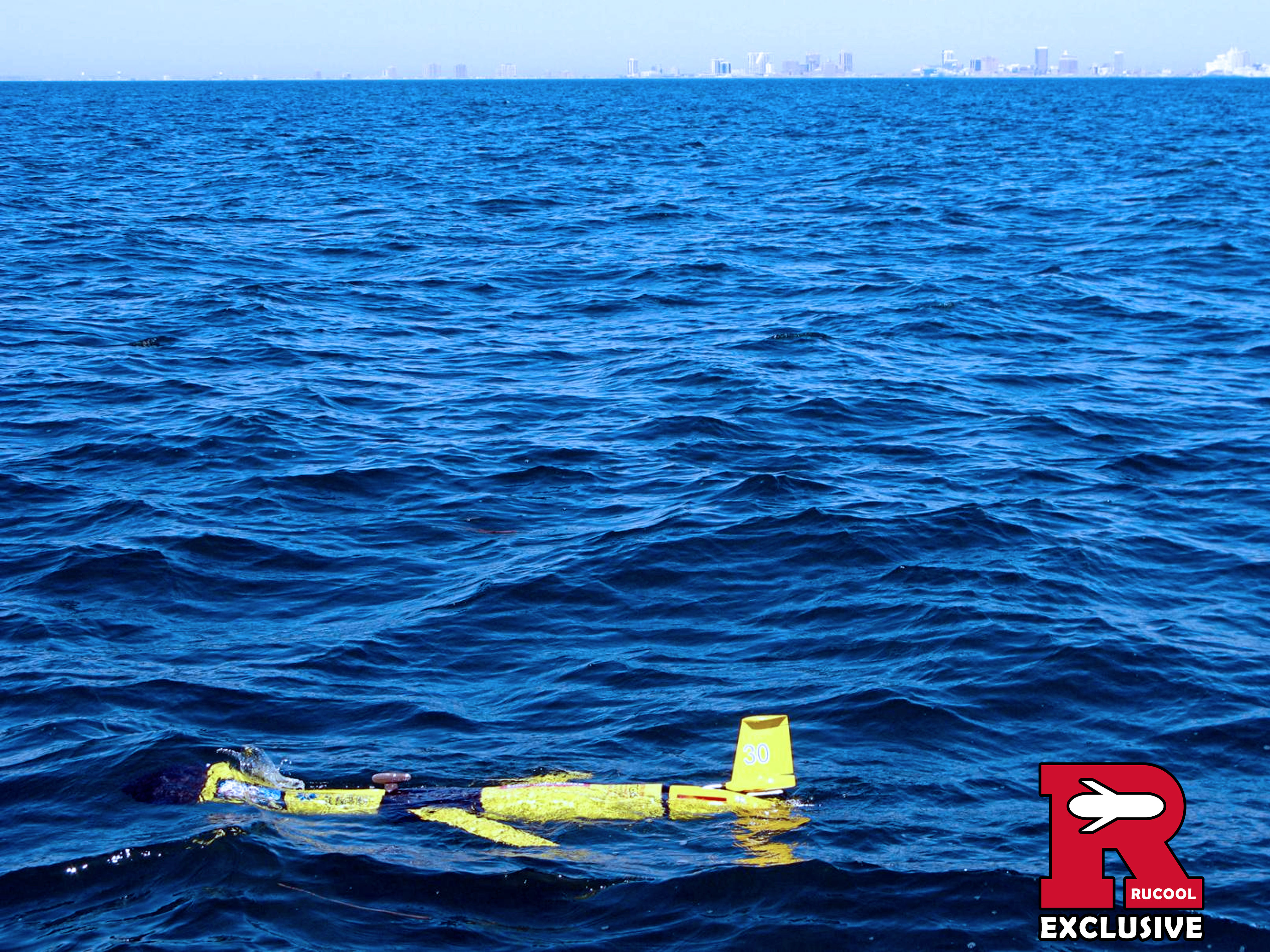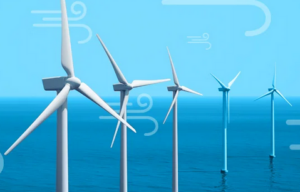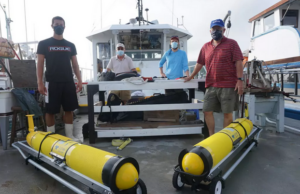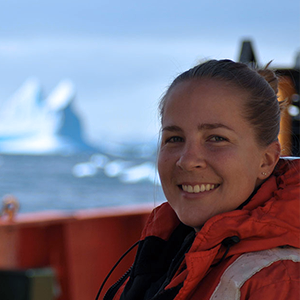Thanks to carbon emissions, the ocean is changing, and that is putting a whole host of marine organisms at risk. These scientists are on the front lines.
Eric Niiler | National Geographic
Grace Saba steadies herself on the back of a gently rocking boat as she and her crew slide a six-foot long yellow torpedo into the sea. A cheer erupts as the device surfaces, turns on its electronic signal, and begins a three-week journey along the New Jersey coast.
“It’s taken seven years to get this done,” said Saba, who has been working on this experiment since 2011. “I’m so happy, I think I might cry!”
Saba is an assistant professor of marine ecology at Rutgers University, where she is studying how fish, clams, and other creatures are reacting to rising levels of ocean acidity. Acidification is a byproduct of climate change; a slow but exorable real-life experiment in which industrial emissions of carbon dioxide into the atmosphere are absorbed and then undergo chemical reactions in the sea. Rising ocean acidity has already bleached Florida’s coral reefs and killed valuable oystersin the Pacific Northwest.
Now scientists like Saba want to know what might happen to animals that live in the Northeast, a region home to commercially important fishes, wild stocks of quahogs (clams), scallops, and surf clams that can’t swim away from growing acidic waters.
“They are just stuck there,” Saba said.
Saba’s torpedo-like instrument is actually an underwater drone, known as a Slocum glider, that is carrying an ocean acidity sensor. This is the first time that oceanographers have married the two technologies—glider and pH sensor—to get a big-picture view of changes underway in the commercially important fishing grounds of the Northeastern United States.
The glider will travel 130 miles from Atlantic City to the edge of the underwater continental shelf and back. It will complete a series of dives to the ocean bottom, sampling water temperature, salinity, and pH as it swims. The glider will feed Saba and colleagues data on changing water chemistry more quickly than the testing conducted every four years by seagoing oceanographic vessels.
Rising Acid
Saba and Rutgers graduate student Liza Wright-Fairbanks are hoping to compare ocean pH measurements to coastal fish spawning grounds. Developing fish and shellfish larvae are most vulnerable to rising ocean acidity.
“We don’t know much about pH throughout the entire water column, especially here along the East Coast and the commercial fisheries here,” said Wright-Fairbanks. “They bring in so much money to the country, but if the shellfish can’t survive than neither can the fishermen.”
Scientists say the pH level of the world’s seas have already dropped—on average from 8.2 to 8.1 on the pH scale (lower numbers are more acidic). That’s a 26 percent drop in the past century (because the pH scale is logarithmic). But as the ocean absorbs more industrial emissions of carbon dioxide, its pH is expected to double to 7.7 pH units by the end of the century, according to Aleck Wang, professor of marine chemistry at the Woods Hole Oceanographic Institution.
The result is that, by 2100, “you are going to start seeing calcium carbonate shells dissolve,” Wang said. “It’s not going to be that far away.” By killing such critical shelled organisms as corals, oysters, and many plankton, acidic waters may upend the ocean food chain.
Fishermen in the Gulf of Maine are already seeing seasonal changes in ocean acidity that could one day threaten a seafood harvest worth more than $600 million to Maine’s economy. Further south in the Mid-Atlantic region, seafood harvesters worry about their future as well.
“We are all trying to figure out the right path forward,” said A.J. Erskine, owner of a commercial oyster hatchery on the Potomac River in Virginia. “I don’t know if there is a solution, but the more data we have the more knowledge we have. If we don’t know the pH, how can we address it?”
Erskine is part of a group of fishermen, scientists, and state fisheries managers called the Mid-Atlantic Coastal Acidification Network that is pushing for more research and attention on the issue. Scientists at the University of Delaware and NOAA just deployed the first permanent buoy to measure carbon dioxide levels in Chesapeake Bay, the largest estuary in the eastern United States. The moored buoy will help researchers figure out whether the bay can handle more CO2 from the atmosphere while also dealing with man-made pollution from surrounding farms and factories.
In another attempt to study acidification, researchers at the National Oceanic and Atmospheric Administration launched 23-foot long surface drones powered by sail across the Pacific and Arctic Oceans to gather wind, temperature, and acidity data. They hope to eventually use the mobile saildrones to replace aging surface buoys that are tethered to the seafloor.
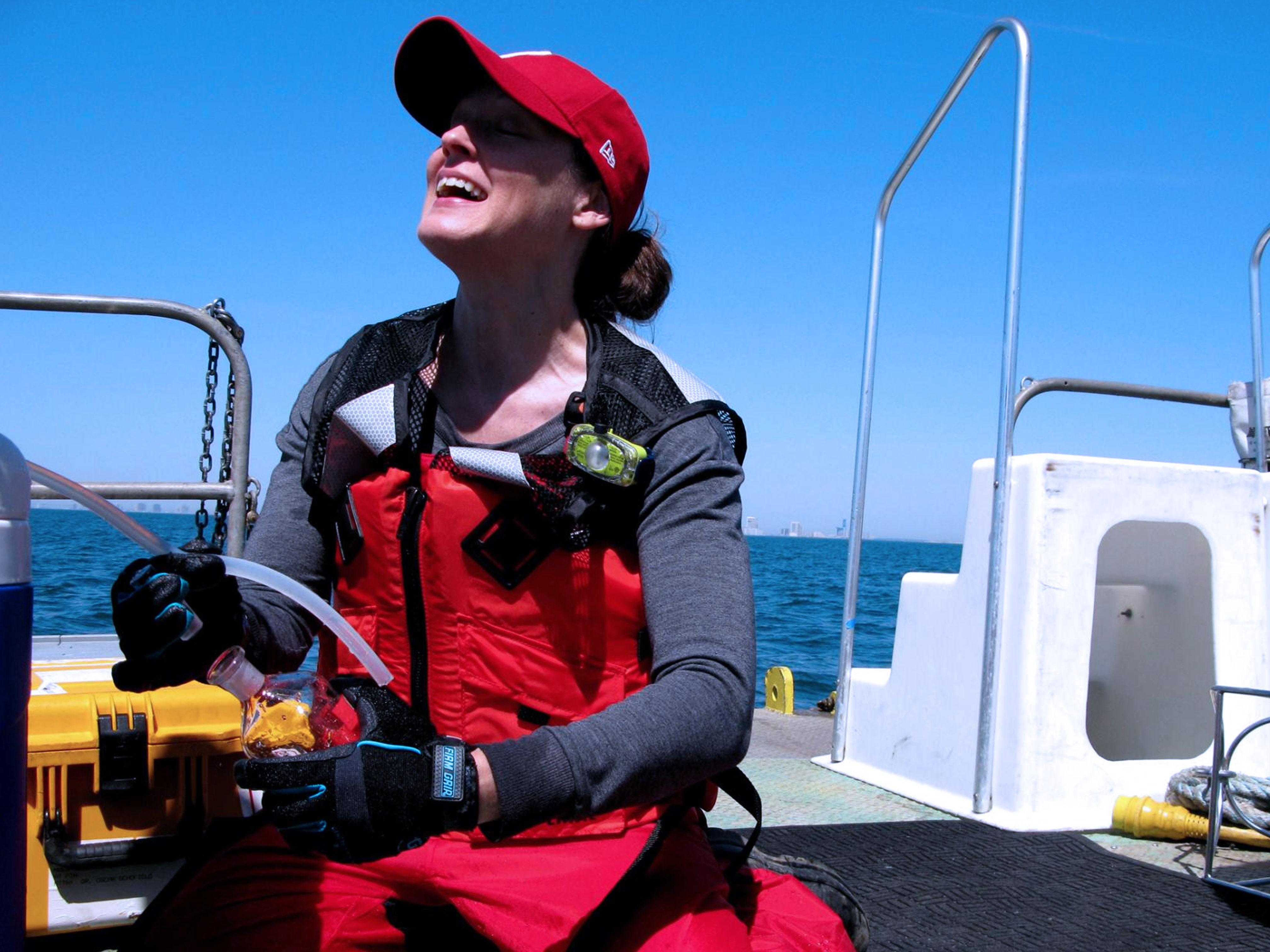
Grace Saba of Rutgers takes water samples to better understand the changing ocean.
And just as some scientists are trying to develop corals that are more resistant to acidic waters, Erskine says that one solution may be to find oysters, clams, and other fish that are resilient as well.
“The way we can do that is by manipulating the tanks in the hatchery,” Erskine said. Of course, that only works for farm- or hatchery-raised species. “It’s more difficult when you are talking about Chesapeake Bay or the Gulf of Maine.”
Gambling on the Future
Back on the boat, Saba, Wright-Fairbanks, and Rutgers research professor Travis Miles spend the morning at sea testing the Slocum glider. They want to make sure its instruments are working perfectly before putting it on auto-pilot and sending it on its environmental mission. Each in turn throws overboard a gray plastic water sampling bottle attached to a rope known as a CTD. Those old-school measurements of water quality are then compared to sensor readings on the glider.
After the Rutgers team deploys the glider, the 46-foot crewboat returns to a marina near the Golden Nugget casino in Atlantic City. Wright-Fairbanks is just starting her PhD at Rutgers, and this ocean acidity experiment will comprise her thesis studies over the next few years.
She recalls getting bit by the science bug as a high school student. During a science summer camp in the Bahamas, Wright-Fairbanks conducted an experiment in which fish were given the choice between swimming in a tank with acidic water or an adjacent one with a hungry shark.
“Most chose the shark,” Wright-Fairbanks said.
To these scientists, it’s clear that the world’s ocean is changing from both warming temperatures and rising acidity. Their work might help answer questions about which species will survive, which will migrate to other more-forgiving habitats, and which ones will end up a distant memory.

